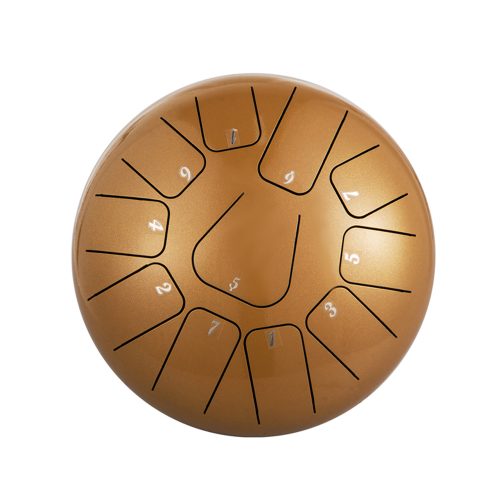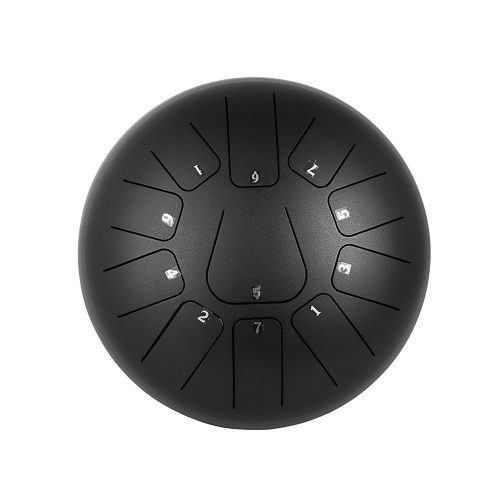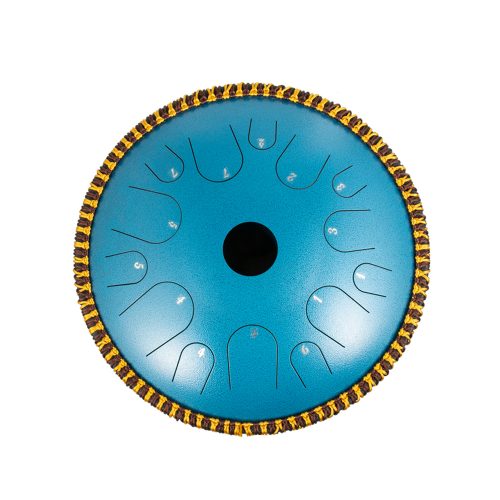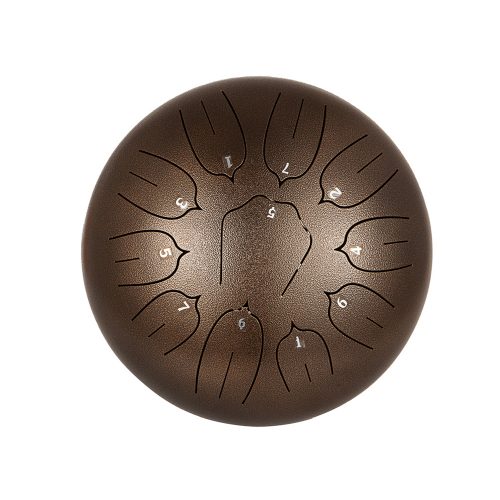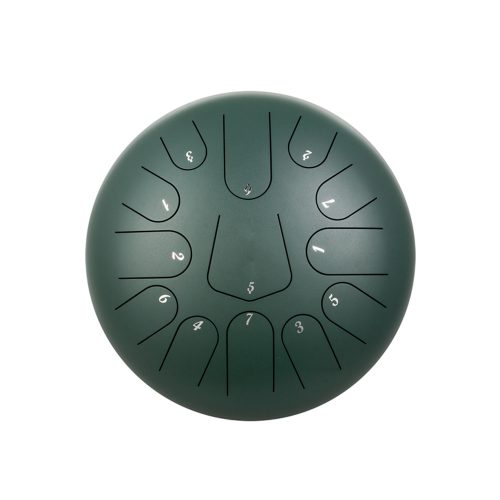BEST STEEL TONGUE DRUM COLLECTION FOR YOU
- What does a tongue drum do?
- Why is it a tongue drum?
- Where did the drum originate?
Tongue drums have existed for a long time if you consider the wooden drums created by the Aztecs, namely the tone drums or log drums. Another is the slit drum of African. Modern steel tongue drums are developed from these drums.
- Who invented the drum?
- When was the drum invented?
- Mallets or sticks
- Hands
When playing tongue drums, you can put the drum on your lap. Placing the lowest notes closest to your body makes drumming easier.
Ensure the manufacturer recommends them if you use a stand or play the drum on a table or floor.
- Beginners
Play all the steel tongue drum notes in a loop.
Play only specific notes. For example, play the right or left notes. Or, play the bottom or top notes. Create patterns and chords.
Patterns: play notes in a specific pattern, or play two notes at once. Use different sounds and melodies.
Chords: Play two notes at the same time that complement each other. Play it repeatedly and then use different chords.
Play the drums using different strengths. Play the drums gently first, then a bit harder.
- Advanced
Use your fingers to diminish the notes.
Jam the drum with something soft to shorten or diminish all the notes and play a faster melody.
Use mallets. Alternate between plain wooden sticks or rubber or felt mallets. If you have no access to rubber mallets, add rubber bands to the mallets to make your own.
Follow drumming patterns and sheet music.
Watch YouTube and play steel tongue drum songs.
- Best Brands
Unknown
Lexington
HAPI
Ohuhu
Meinl
VIVOHOME
Amahi Ukuleles
Rav Vast
MI&VI
GUDA DRUM
Moukey
Nataraj
Beat Root
AKLOT
LEKATO
OcarinaWind
MEINL Sonic Energy
LOLUNUT
FOUR UNCLES
Hantop
Rakumi
Yinama
PICKMAY
GRACEOFNOTE
LOTKEY
IPHUNGO
AS TEMAN
REEKIO
KosmoskyDrum
Hluru
Drume Hand
- Tone Scales
Major scales are more exhilarating and joyful. For example, the C major scale is very upbeat.
The minor/sharp scale is considered to be darker and sad. For example, the C sharp scale is considered to be very melancholy.
The Akebono scale has a more meditative or Zen-like tone.
If you don't know which scales to choose, perhaps you can purchase a double-sided or tunable tongue drum. Some tunable tongue drums have six scales. They can change scales in seconds. You'll also need to buy an electronic tuner.
- Pitch/Frequency
For calmer notes and lower pitches, 432 Hz is recommended.
440 Hz is for musicians. It is best if played with other instruments.
444 Hz helps release tension.
- Aesthetics
- For who?
A 5 to 8-inch steel tongue drum is recommended for a child.
- Size
- Weight
- Step 1: Prepare
- Steel tongue drums.
- Neodymium magnets.
- A tuning app on your smartphone.
- Step 2: Paste the magnets
- Step 3: Adjusting the leaves
The difference is that you move the magnets around inside the drum.
It would help if you placed the magnets in the horizontal center of each leaf.
It would help if you moved them up and down to adjust them, not left and right.
You move the magnets and bump the leaves until your application shows the desired result.
- Hands
- Mallets or sticks
- How many steel tongue drum notes & sizes?
- What size is best?
In general, small drums are suitable for children. Of course, smaller drums boast fewer notes. If you are an adult, you may need a larger drum.
- Steel Tongue Drum vs. Handpan(Hang Drum) -Tongue Drum
- Low cost (1/3 the price of a Handpan/hang drum)
- Very sturdy
- It does not run out of tune
- It can be used with mallets or hands
- -10 to +45 degrees
- Smaller
- Resonance is longer
- Meditative sound
Cons
- Not suitable for fast, punchy playing
- Not as loud as a Handpan(hang drum)
- Smaller notes
- Heavier
- Steel Tongue Drum vs. Handpan(Hang Drum) - Handpan
- "Magic" sound
- Larger sound range
- Easier to play
- Suitable for fast playing
- Bigger sound than tongue drums
- Stainless steel material does not rust
- More materials, scales, and types
Cons
- Expensive
- More sensitive
- It goes out of tune faster
- Must be retuned every 1-6 years
- Non-stainless steel will rust
- Sensitive to heat (sun)

